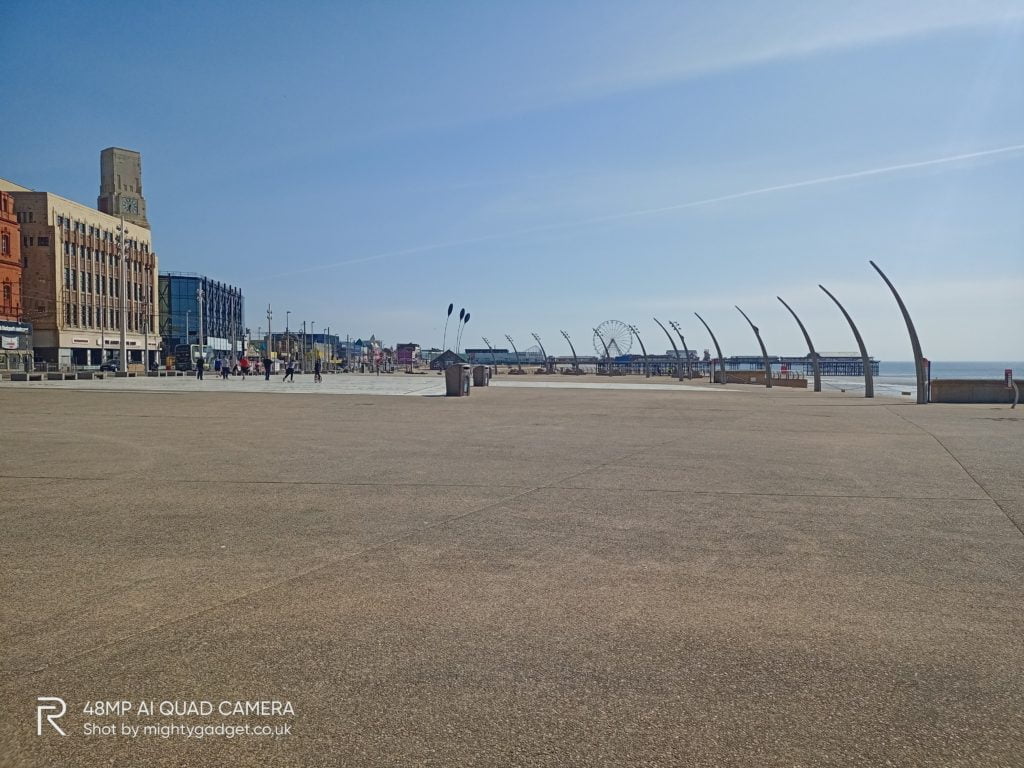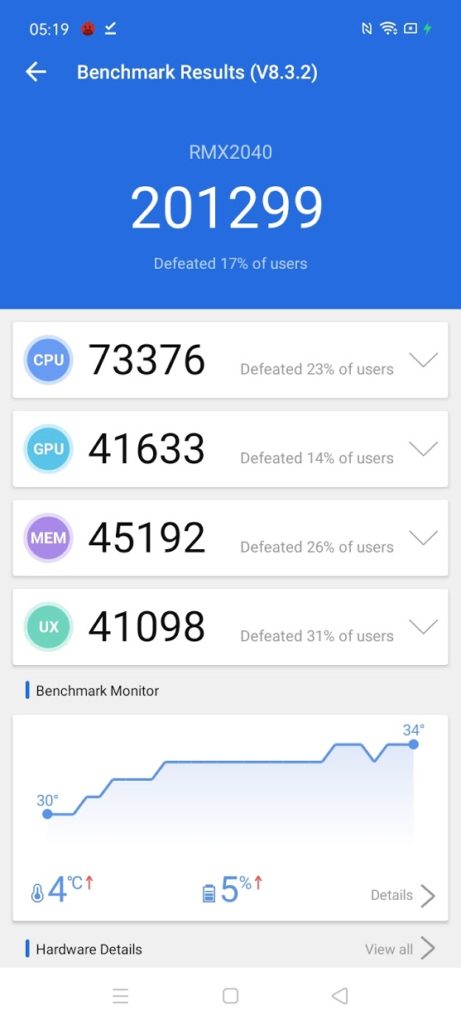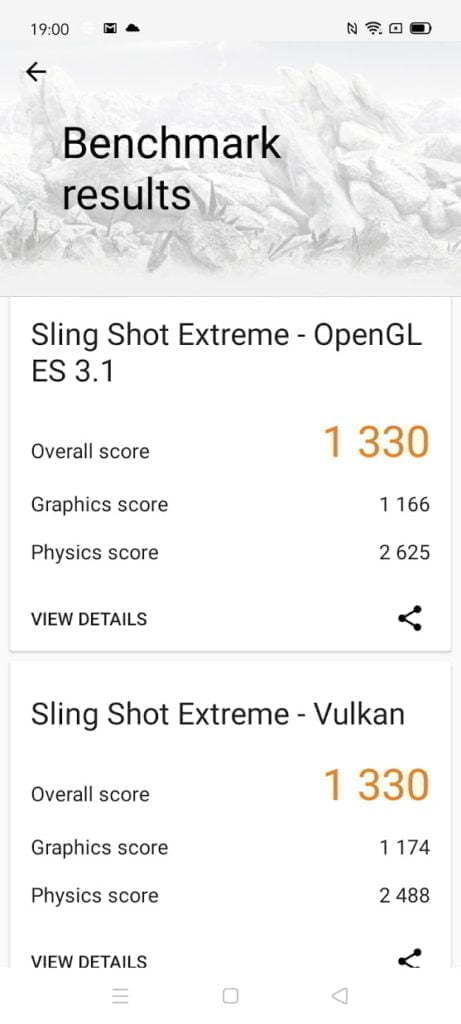I loved both the Realme 6 and Pro, though it is only the Realme 6 that has been launched so far. While we don’t have word on how much the Realme 6 Pro will cost, it looks very likely that the Realme 6 will be the stand out choice, balancing features and performance with an incredible price.
The Realme 6i is the new budget option of the 6-series, strangely it comes just a few months after the launch of the Realme 5i. It does offer a decent bump in specification compared to the 5i but also comes with a 40-Euro price hike, at the same time it is just 30-Euros/£30 cheaper than the superb Realme 6.
So does the Realme 6i do enough to differentiate itself from the other excellent Realme options?
Specification
- Display – 6.5 inches 720 x 1600 pixels
- Chipset – Mediatek Helio G80
- RAM – 4GB
- Storage – 128GB
- Camera:
- 48 MP wide
- 8 MP ultra-wide
- 2 MP macro
- 2 MP depth
- 16 MP selfie
- Battery – 5000 mAh battery & 18W charge
- Other: NFC, 3.5mm, Splash resistant
Wheres the Wi-Fi 5?
One thing worth pointing out, this lacks Wi-Fi 5 only supporting Wi-Fi 4 (Wi-Fi 802.11 b/g/n). This seems bizarre for 2020 when Wi-Fi 6 is the standard for flagship phones this year, and Wi-Fi 5 (802.11ac) has been a thing for the past 6 years.
When connecting my phone to Wi-Fi, the link speed gets recorded as just 72Mbps vs 866Mbps of the Realme 6.
It is a bizarre omission, and to make things more confusing, the Realme 5i did have Wi-Fi 5. For most people, it probably won’t make too much of a difference, but it is certainly a mark against the phone.
Realme 6i vs Realme 6
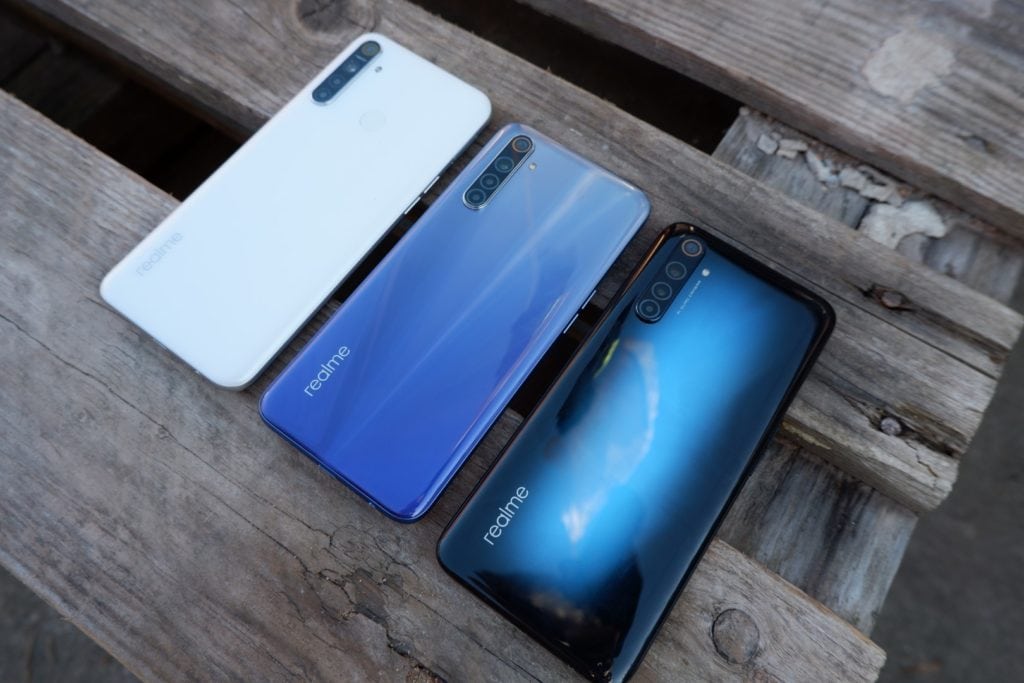
There is a 30-Euro or £30 price difference between the two of these phones. The Realme 6 is vastly superior in almost every aspect. Though the base model does only come with 64GB of storage vs 128GB of the 6i (you can upgrade the memory via microSD though).
The Mediatek Helio G90t typically offers over a 30% performance gain over the G80, and almost double in some gaming benchmarks.
You also get a significantly superior display going from 720 x 1600 pixels at 60Hz refresh rate on the 6i to 1080 x 2400 pixels 90Hz refresh rate on the 6.
The camera is better, too, with a 64MP primary lens that has a larger sensor.
Then the Realme 6 also has Wi-Fi 5, which is something I should not have to list as an advantage.
With such a significant difference in specification, and overall performance, including the omission of Wi-Fi 5 but only a small price difference, I feel like the Realme 6i was just not designed for the western market in mind.
Design and Display
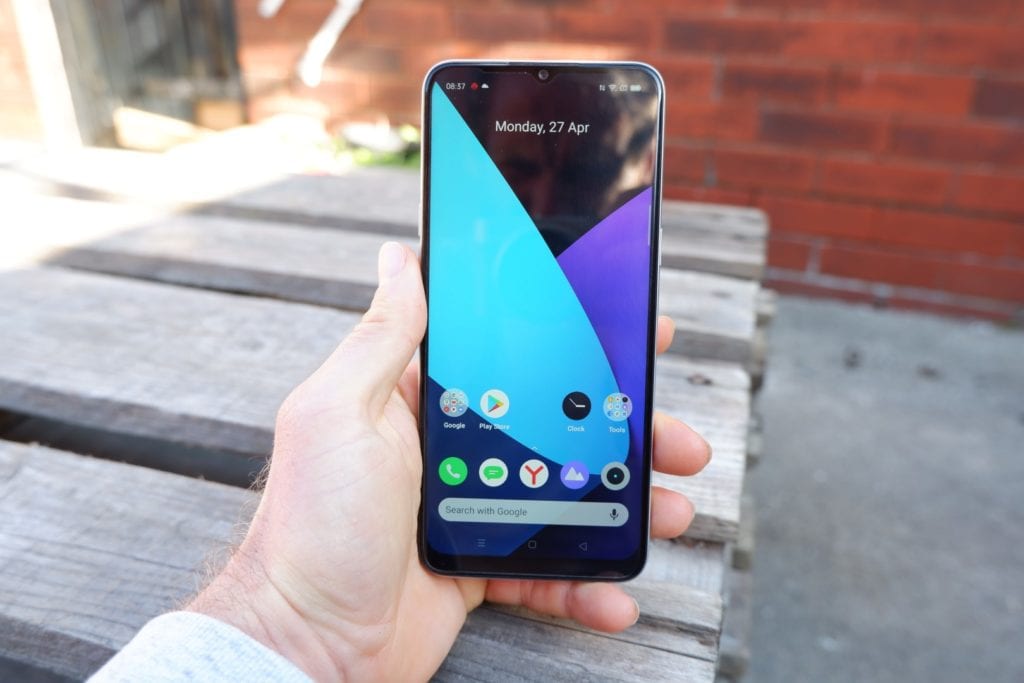
Like many of the Realme phones, this uses a plastic rear it does give them a slightly cheap feel, but it is more durable and cost-effective. Gone is the shiny shimmering colours found on the other phones and you now have a matt white or moss green which has a vertical line effect running down in the column on the phone. I actually prefer the look of this compared to the Realme 6, I think it gives is a cleaner smarter look.
The 720p display is very low resolution for 2020, and there is a noticeable lack of clarity and vibrance compared phones with 1080p or higher. This includes the Realme 5 Pro which costs the same as this.
Thankfully, even though this is the budget phone of the 6-series, Realme has decided to use USB-C.

Fingerprint Scanner and Facial Recognition
Unlike the other 6-series models, this has the fingerprint scanner located on the rear of the phone. The fingerprint sensor does ruin the nice clean lines on the rear of the phone, but apart from that I am indifferent to its location. I know some people much prefer a rear fingerprint senor over side due to it being more usable for left-handed users. Rear fingerprint scanner accuracy and speed has been good on phones for years, so there is no exception here.
Like most phones recently, face unlocking works very well too. With its single selfie camera, it probably isn’t the most secure, but I doubt many people have the skills to casually bypass this.
Camera

The affordable nature of Realme phones tends to mean the camera performance is unspectacular but respectable. The same could be said here, in good conditions the phone can produce some excellent shots that look good even when blown up on a monitor. You can achieve a nice natural bokeh effects thanks to the depth lens and colours seem to be accurate.
In less than ideal shooting conditions things do deteriorate quickly, and I found the digital zoom seemed to be worse than the Realme 6.
The primary less has both fewer megapixels but a much smaller sensor size compared to the Realme 6 so it is understandable that it can’t quite compete.
As far as video goes, don’t expect to become YouTube famous shooting footage from this. Video goes up to 1080p at 30FPS, and there is no ultra steady mode like the other models.
That being said, this is a sub-£200 camera, it is never going to top the DXOmark charts, and I find the overall performance to be good based on its pricing.
Camera Samples
Performance and Benchmarks
I have done a more in-depth analysis of the Mediatek Helio G80 and how it compares to the other phones from Realme.
For day to day use it is perfectly acceptable, and it is amazing to see how far phones have come in the past few years. A few years ago a sub-£200 was downright unpleasant to use, but now you have good all-round performance including a moderately decent camera.
However, as the synthetic benchmarks indicate, the chipset isn’t particularly amazing when you compare it to the Mediatek Helio G90T found in the Realme 6 or the Qualcomm Snapdragon 720 found in the Realme 6 Pro and Xiaomi Redmi Note 9S.
In the 3D gaming benchmark, 3D Mark, the Helio G80 did particularly poorly being 35% lower than the Snapdragon 712 found on the Realme 5 Pro, which is currently on sale for the same price as the Realme 6i. Then the Realme 6 with the Helio G90T scores almost double in the Vulcan test.
However, one saving grace, when you compare it to the Snapdragon 665, which is in the previous generation 5i and 5, the chipset does offer a significant boost in performance across the board.
In Antutu that ends up being a 20% improvement and 3D Mark, it is a 23% and 25% increase in the two respective tests.
Overall, I don’t feel like the cost-saving benefits of the G80 justify the reduced performance compared to the G90T in the Realme 6.
Battery
One thing the Realme 6i does very well is the battery performance, Realme claim it can go 39-days on standby which is just mindboggling.
I have struggled to get the PC Mark 2.0 battery test to complete, I think it goes on that long it just crashes, and because it takes so long to run it is not very convenient to retest regularly.
The 5000mAh battery, mid-range chipset and 720p display means this phone sips juice. You will easily get two actual full days worth of use out of it. You will quite likely go beyond this, it’s just that charging my device nightly has become so ingrained I can’t comprehend not doing it.
Software
Similar to the other 6-series phones, this comes with the new Realme UI, which is a modified version of ColorOS. It is supposed to be more lightweight and closer to stock Android.
I quite liked ColorOS in the first place, and the Realme UI tweaks seem to improve things a little more.
It does come with a little bit of bloatware, all of which is removable. The main two things are the two Yandex apps, one of them is in Russian. It is possible that the UK retail version will not have either of these.
Price and Competition
If I have not made this clear enough throughout the review, for a little bit of extra money, you can get a lot more phone. Excellent options include:
The Realme 5 Pro is the same price as the 6i direct from Realme and I would say that it is fractionally better.
At £209 I probably wouldn’t buy it though, the Realme 6 and Redmi Note 8 Pro are significantly better than the Realme 6i or 5 Pro and well worth the extra money.
The Qualcomm Snapdragon 720 should also make the Xiaomi Redmi Note 9S a much better option than the 6i.
Android Phones under £200
It is always easy to pick out better phones when you look at something more expensive, but if £189 is all you can afford spending £30 extra on the Realme 6 is a bad recommendation. Due to the vast number of options I haven’t researched this exhaustively, I just uses an Amazon search to see what’s available.
- Huawei P30 Lite – £197
- Samsung Galaxy A40 – £185
- Motorola Moto G8 – £179
- Huawei P Smart Z – £149.99
- Huawei P Smart 2019 – £149.40
- Motorola One Macro – £179.00
- Redmi Note 8T – £175
Out of that list, none of them is particularly appealing over the Realme 6i. The Note 8T is good, but the SD665 performs even lower than the Helio G80. I gave the Huawei P Smart 2019 an excellent review last year, and it is still a good option if your budget is £150 max, but it fails to compete against the 6i, which offers a superior spec and performance across the board (except for the display and Wi-Fi).
Overall
I have mixed feelings about this phone, with a £30 price difference to the Realme 6, if you can justify the extra cost then I see little reason to get this. The Realme 6 is a considerably better phone by a large margin.
If £200 is your absolute max budget, the phone does look more promising. From my very limited research, nothing really competes in terms of the overall specification. However, the Redmi Note 9s is only £15 more at £204, which will likely offer superior all-round performance.
Overall, when looking at this phone in a vacuum, it is good, providing you with decent overall performance at an attractive price point. However, in a crowded market place of affordable phones, which is already dominated by many of the other Realme phones, it struggles to stand out.
Realme have always been a youth focussed brand, but I feel the 6i may have more appeal to older generations in the UK, who just want a cheap phone with a big display that works while not having to worry about charging it all the time.
